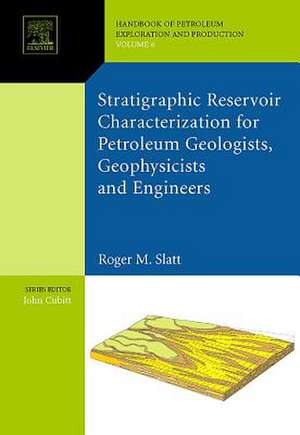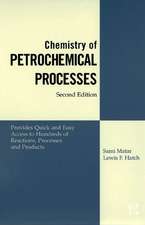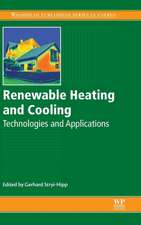Stratigraphic Reservoir Characterization for Petroleum Geologists, Geophysicists, and Engineers: Developments in Petroleum Science, cartea 61
Autor Roger M. Slatten Limba Engleză Paperback – 30 noi 2006
Slowly, reservoir characterization came into its own as a quantitative, multidisciplinary endeavor requiring a vast array of skills and knowledge sets. Perhaps the biggest attractor to becoming a reservoir geologist was the advent of fast computing, followed by visualization programs and theaters, all of which allow young geoscientists to practice their computing skills in a highly technical work environment. Also, the discipline grew in parallel with the evolution of data integration and the advent of asset teams in the petroleum industry. Finally, reservoir characterization flourished with the quantum improvements that have occurred in geophysical acquisition and processing techniques and that allow geophysicists to image internal reservoir complexities."
Preț: 993.24 lei
Preț vechi: 1154.93 lei
-14% Nou
Puncte Express: 1490
Preț estimativ în valută:
190.07€ • 197.32$ • 158.49£
190.07€ • 197.32$ • 158.49£
Carte indisponibilă temporar
Doresc să fiu notificat când acest titlu va fi disponibil:
Se trimite...
Preluare comenzi: 021 569.72.76
Specificații
ISBN-13: 9781493302383
ISBN-10: 1493302388
Pagini: 492
Ediția:
Editura: ELSEVIER SCIENCE
Seria Developments in Petroleum Science
ISBN-10: 1493302388
Pagini: 492
Ediția:
Editura: ELSEVIER SCIENCE
Seria Developments in Petroleum Science
Cuprins
1. Basic principles and applications of reservoir characterization2. Basic sedimentary rock properties3. Geologic time and basic stratigraphy4. Tools and techniques for reservoir5. Sequence stratigraphy for reservoir characterization6. Geologic controls on reservoir quality7. Fluvial deposits and reservoirs 8. Eolian (windblown) deposits and reservoirs9. Shallow marine (deltaic and non-deltaic) deposits and reservoirs 10. Deepwater deposits and reservoirs11. Unconventional reservoirs12. Basic structural attributes of reservoirs13. Geomodeling



















